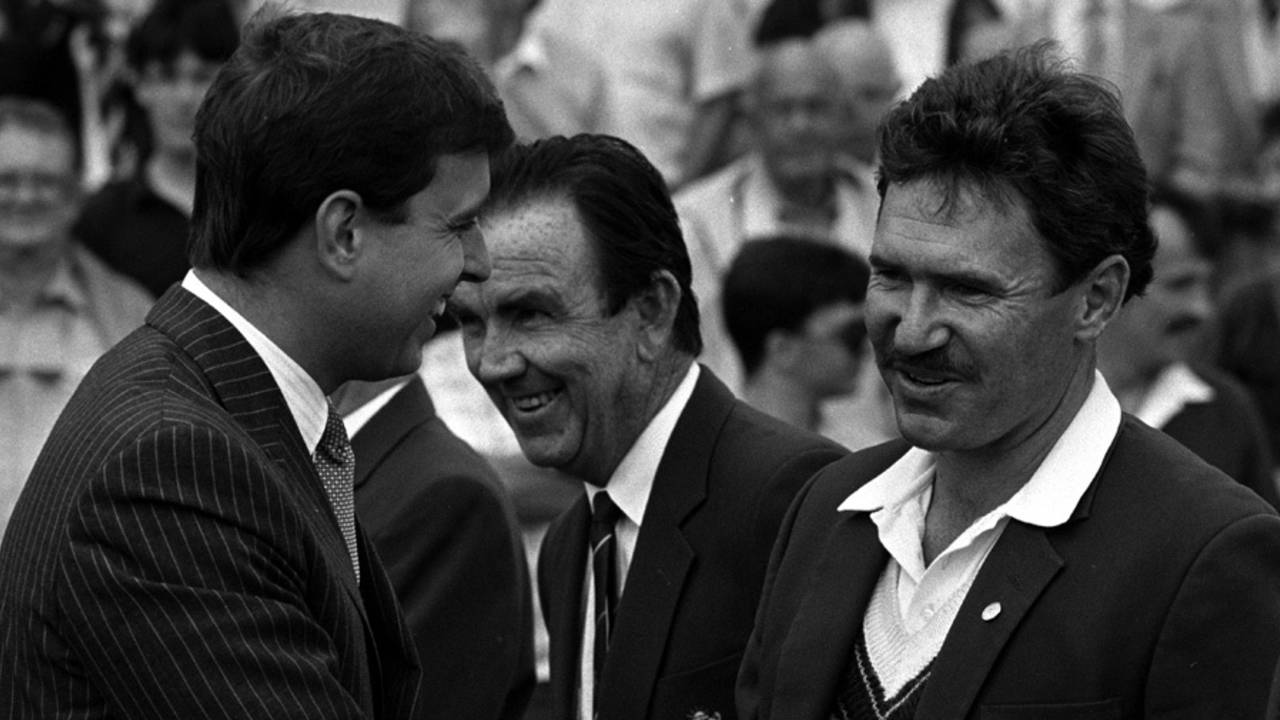India took all 100 possible wickets in the recent series against England. How rare is this? asked Chandrasekhar from India
As
this table shows, the recent series in India provided the 12th case of a team taking all 100 possible wickets in a five-Test series.
Four of the previous instances were in the Ashes: England took all 100 Australian wickets in 1903-04, 1911-12 and 1924-25, and Australia returned the favour in 2013-14. Australia took all 100 South African wickets at home in 1931-32 and away in 1935-36, and all 100 West Indian wickets at home in 1968-69 and 2000-01. West Indies also lost all 100 in South Africa in 1998-99, but took all India's wickets in 1961-62, and all England's in 1985-86, both at home.
There have also been a few six-Test series, which obviously gives the opportunity for a side to take even more than 100 wickets. England actually took all 120 available Australian wickets in
the 1978-79 Ashes series, but lost 116 at home in the Ashes
in 1993.
A record total of 224 wickets from both sides went down in 1978-79, one more than in the
1981 Ashes in England. The most wickets to fall in all in a five-Test series is 197, in the
1907-08 Ashes in Australia.
I was reading that Garry Sobers captained West Indies in 39 successive Tests, which was a record at the time. Has anyone done more since? asked Clayton Underwood from Barbados
Garry Sobers did captain in 39 successive Tests between 1964-65 and 1971-72. That was indeed the overall record at the time, and is still the most by a West Indian - it's rather a surprise to find Daren Sammy next with 30, one more than Clive Lloyd managed consecutively (Lloyd captained in many more Tests overall, but missed the odd one through injury).
Sobers now lies
joint eighth on the overall list (Joe Root also skippered 39 in a row, between 2017 and 2020-21).
Allan Border leads the way, having captained Australia in 93 successive Tests in almost a decade between December 1984 and his retirement in March 1994; Ricky Ponting comes next with 73. New Zealand's Stephen Fleming led in 65 consecutive matches, Alastair Cook 57, Mike Atherton 52, Mark Taylor 50, and Graeme Smith 40.
What's the Indian record for most runs and most wickets in Test wins? And who hold the overall records? asked Nikhil Dugar from India
The man with the
most runs in Test wins is Australia's
Ricky Ponting, with 9157, including 30 centuries, another record. This is not terribly surprising, as Ponting took part in 108 Test victories (Shane Warne is next with 92). Another Australian is in second place: Steve Waugh made 6460 runs in 86 Test wins. Next come the South African Jacques Kallis with 6379 in 82, another Australian in Matthew Hayden 6154 in 71, and then the leading Indian,
Sachin Tendulkar with 5946 runs in 72 wins.
The bowler with the
most wickets in Test victories is Warne with 510, ahead of Sri Lanka's Muthiah Muralidaran (438) and Glenn McGrath (414). Not far behind come two current players, Jimmy Anderson with 380 wickets in Test wins, and the leading Indian in
R Ashwin, who has 363.
I spotted that in the 1882 Oval Test, England's first innings lasted less than 72 overs, so no bowler should have more than 36 overs - but Fred Spofforth is shown as bowling 36.3. Is this a mistake? If not, how was it possible? asked Steven Oorts from Australia
You're right that in the nail-biting
Test at The Oval in 1882 - the one that spawned the legend of the Ashes - Australia's
Fred "The Demon" Spofforth bowled 36.3 overs in England's first innings, which lasted 71.3 in all.
That wouldn't be possible today, but there was a peculiar glitch in the Laws at the time that allowed bowlers to change ends and bowl the next over, as long as they didn't do it very often. The earliest set of Laws, in 1744, stipulated that a bowler could not change ends more than once in an innings (whether he bowled the next over or not). This was changed in 1870: "Provided he does not bowl more than two overs in succession, a bowler may change ends twice but not more often in an innings." Therefore Spofforth was allowed to change ends after the 27th over of England's first innings and bowl the 28th; he bowled for the rest of the innings, and finished with 36.3 of the 71.3 four-ball overs that the opposition lasted.
This all seems rather artificial now, but it was not until 1889 that another amendment to the Laws forbade a player from bowling successive overs. This has, however, happened very occasionally in Tests since:
at Old Trafford in 1921, the Australian captain
Warwick Armstrong bowled two consecutive overs after a break in play (in
Next Man In, an interesting book about the evolution of the Laws, Gerald Brodribb thought this was "possibly on purpose"); and against England
in Wellington in 1950-51, the New Zealand legspinner
Alex Moir bowled two in a row either side of the tea interval on the fourth day.
Xavier Bartlett took four wickets in his first two ODIs last month. How many bowlers have managed this? asked Jason Crompton from Australia
The Queensland seamer
Xavier Bartlett took 4 for 17 in his first one-day international,
against West Indies in Melbourne on February 2, and added 4 for 21 against them
in Canberra four days later.
Bartlett was only the sixth bowler to take at least four wickets in both his first two one-day internationals. The first was the great West Indian
Curtly Ambrose, with 4 for 39 and 4 for 35 against Pakistan in 1987-88. Adam Hollioake collected 4 for 23 and 4 for 45 in his first two matches for England, in 1996, and the Scotland slow left-armer Hamza Tahir started with 4 for 37 and 5 for 38 in 2019.

